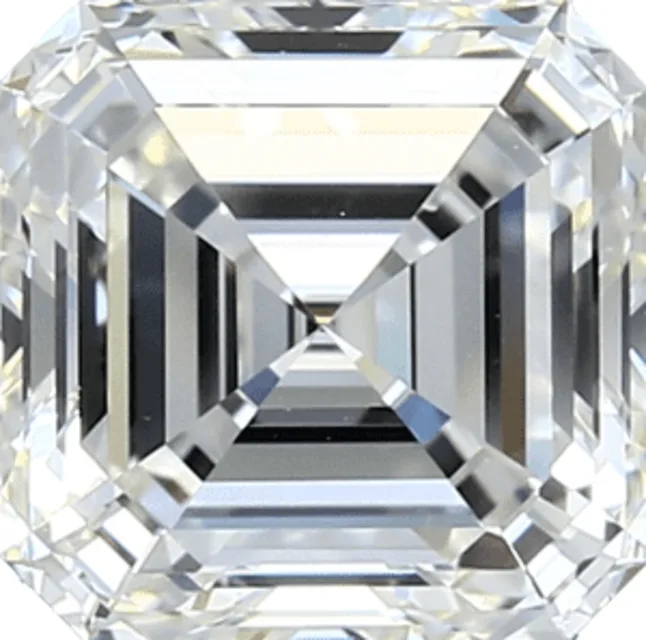Today, I would like you to see me as your fairy godmother. Your wise and winged guide to the wonders of the diamond world, helping you place grace ahead of indulgence and brilliance ahead of bling.
You see, we all love the idea of a superlative. The biggest, the most expensive, the most wondrous of them all. It places anything attached to such a descriptor into the category of unattainable, and we all love a good peer over the garden fence into a greener field. But, one of the most important lessons any student of diamond is taught is that big, indeed biggest, does not mean best.
So, I had a little fun here. I have singled out three of the ‘biggest diamond rings’ the internet could offer, three rings that sing of the fabulous and fantastical, and attached to each a cautionary tale.
Not a Keeper
Let’s start back in the 1950s. An age of glamour, soft-focus and post-war euphoria. And big diamonds. One in particular. A 33.19 carat Asscher Cut (link to Asscher Cut article) diamond, probably sourced from the now abandoned Jagersfontein mine in South Africa. This major chunk of mineral is what is categorised as a Type IIa, implying it is as close to text book pure carbon as you can get, with only a sniff (actually, not even that – a mere ‘sn’) of nitrogen as an impurity. This category of stone accounts for less than 2 % of all gems – so, unsurprisingly, is the top-dollar stuff. It is, therefore, fitting that this particular big and rare stone was originally owned by baroness Vera Krupp, gifted to her by her industrialist husband and set into a ring.
However, it wasn’t a marriage made to last, and she soon divorced him. But kept the diamond. Now, one would have said that was savvy - until she was tied up and robbed in her ranch outside of Las Vegas, and the ring was stolen straight off her finger.
The diamond was recovered six weeks later (after the police were tipped off that a local grocer was trying to sell more than kilo or two of greens) and reunited with the Baroness. She had set it back into a ring, and having learnt her lesson, kept it on her finger at all times, discreetly tied to a string attached to her bra with a safety pin, as an ingenious security measure.
On her death, the diamond ring was sold to the actor Richard Burton, as a gift to his wife, the demonstrative and beautiful actress, Elizabeth Taylor, for the then record price of $305,000 in 1968.
In keeping with the tradition set by Krupp, she divorced Burton (twice), but kept the ring. Not really the stuff of ‘Diamonds are Forever’ now, is it?
When Elizabeth Taylor died in 2011, the auction house Christie’s sold the ring for $8.8 million to Korean company ELAND. It is no longer on anyone’s finger, as far as I can tell. Which, based on its track record, is probably best.
Read the Small Print
Next up in my lesson in moderation is an ‘all-round’ odd idea. In 2011, Swiss jewellers Shawish, produced the first ever all diamond ring. No shank. No claws. No metal at all. Just a band of diamond laser-cut from a single piece of rough. Decorated with ninety facets, the ring does look impressive. Like some ethereal offering from the fairy kingdom. And it is big, weighing 150 carats – that’s 30gms – so comparable to the modest diamond ring that will on average weigh between 2 and 4 gms, that is quite a weight on your finger.
But here’s the issue. Diamond is incredibly thermally conductive, five times that of the best metal conductors, such as copper. That means that it will transfer heat away from a source as fast as you can say ‘eh?’ Beyond diamond’s incredible hardness, its thermal conductivity is one of the most commonly utilised properties of diamond in industry - for example, to keep electrical circuits cool. It is also the property exploited by every jeweller’s favourite tool, the diamond tester. My point is this. Put an all-diamond ring on your finger, and it will look impressive. But, for god’s sake, stay away from anything hot. Or you are going to end up with a far less attractive burn….
https://www.rough-polished.com/upload/main/mohammed_shawish_ring_650.jpg
Not one to Pick
Finally, to end in full bloom. And this one has actually made it into Guinness Book of World Records at the end of last year (December 2020) for the most diamonds set in one ring.
The ‘Marigold’ or ‘Ring of Prosperity’ was designed by Harshit Bansal, founder of Indian jewellers, Renani Jewels, and contains an extraordinary 12,638 pave-set diamonds, totalling 38.08 carats. It is huge. Modelled as the Marigold flower, a sacred symbol in Indian culture, it spans the entire width of a hand. And weighs in at 168gms. I have no doubt that it would look spectacular when each one of those little gems dance in the light. But this is certainly not for everyday wear. It is a jewel that involves major upkeep. Pave set pieces are renowned for regularly shedding a stone here and there. And if you try finding a diamond with a 1mm diameter in a deep pile carpet. It’s vacuum fodder, I’m afraid.
Moderation, my friends, moderation. Biggest is not always best.
(Here ends the lesson).

